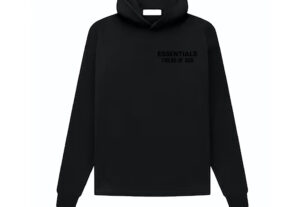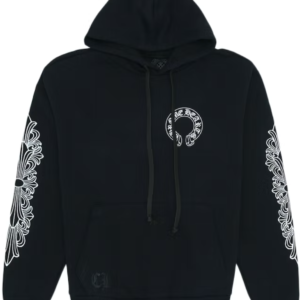Pendants have long held a special place in the world of jewelry. From ancient amulets believed to hold protective powers to modern-day fashion statements, pendants have evolved significantly over the centuries. They are one of the most versatile pieces of jewelry, capable of being simple, elegant, symbolic, or extravagant, depending on the wearer’s preference. This comprehensive guide explores the rich history of pendants, their evolution, and how you can create your own custom pendant to reflect your personal style.
At Valeria Custom Jewelry, we believe in the power of personalization. Our online platform allows you to design stunning custom jewelry that not only complements your style but also tells your unique story. Whether you’re inspired to create a Custom Moissanite Pendant or a Custom Gold Necklace, we’re here to help you bring your vision to life.
The Origins of Pendants: A Journey Through Time
Pendants have been worn for thousands of years, with their origins tracing back to ancient civilizations. Initially, pendants were more than just decorative items; they were powerful symbols of protection, status, and spirituality.
- Ancient Egypt: One of the earliest known uses of pendants was in ancient Egypt, where they were often used as amulets. These amulets, usually in the shape of sacred symbols like the ankh or scarab beetle, were believed to offer protection and bring good fortune to the wearer. Gold was a favored material, reflecting the Egyptians’ belief in the eternal and divine nature of the metal.
- Classical Greece and Rome: In ancient Greece and Rome, pendants took on more artistic forms, often depicting gods, goddesses, and mythological scenes. These pendants were not only symbols of religious devotion but also a display of wealth and status. Gold and gemstones were commonly used, making them valuable heirlooms.
- Medieval Europe: During the Middle Ages, pendants evolved into religious symbols, with crucifixes and saints’ relics worn close to the heart. These pendants were often crafted with intricate details, incorporating precious metals and stones to reflect their sacred significance.
The Evolution of Pendants: From Renaissance to Modern Times
As societies evolved, so did the design and purpose of pendants. The Renaissance period marked a significant shift in the artistry of pendants, where they became more elaborate and were often used to display personal wealth and social status.
- Renaissance Era: The Renaissance period saw a resurgence in the popularity of jewelry, including pendants. Wealthy individuals commissioned custom pendants featuring intricate designs, often incorporating pearls, diamonds, and other precious gemstones. These pendants were not only beautiful but also served as status symbols, reflecting the wearer’s social standing and taste.
- Victorian Era: The Victorian era brought with it a more sentimental approach to jewelry. Lockets, which are a type of pendant, became popular, allowing individuals to carry a photo or lock of hair from a loved one. Mourning pendants, often made from jet or onyx, were also common during this time, serving as a way to remember and honor the deceased.
- Art Nouveau and Art Deco: The early 20th century saw the rise of the Art Nouveau and Art Deco movements, both of which had a profound impact on pendant design. Art Nouveau pendants were characterized by their flowing, organic lines and nature-inspired motifs, while Art Deco pendants embraced geometric shapes, symmetry, and bold colors.
Modern-Day Pendants: A Blend of Tradition and Innovation
Today, pendants continue to be a popular form of jewelry, valued for their versatility and personal significance. Modern pendants can range from minimalist designs to elaborate statement pieces, often blending traditional craftsmanship with contemporary styles.
- Personalization: One of the most significant trends in modern jewelry is personalization. Whether it’s a Custom Gold Necklace engraved with a meaningful date or a Custom Moissanite Pendant featuring your birthstone, personalized pendants allow you to express your individuality and create a piece that is uniquely yours.
- Innovation in Materials: While gold and silver remain popular choices for pendants, modern jewelry designers are increasingly experimenting with new materials. Moissanite, for example, has become a popular alternative to diamonds due to its exceptional brilliance and affordability. At Valeria Custom Jewelry, we offer the opportunity to design custom pendants using a variety of materials, allowing you to create a piece that aligns with your style and values.
- Symbolism and Meaning: In today’s world, pendants are often chosen for their symbolic meaning. Whether it’s a pendant that represents a personal belief, a reminder of a significant life event, or simply a design that resonates with you, the meaning behind the piece is what makes it special.
How to Design Your Own Custom Pendant
Designing your own custom pendant is a rewarding experience that allows you to create a piece of jewelry that is truly one-of-a-kind. At Valeria Custom Jewelry, we make the process easy and enjoyable, guiding you through each step to ensure your vision is brought to life.
Step 1: Choose the Base Metal
The first step in designing your custom pendant is selecting the base metal. Whether you prefer the classic appeal of gold, the modern look of platinum, or the affordability of sterling silver, the choice of metal sets the foundation for your design. Each metal offers its own unique characteristics, from the warm tones of yellow gold to the sleek shine of white gold.
Step 2: Select a Design
Next, consider the design of your pendant. Are you drawn to minimalist shapes, or do you prefer something more intricate? Do you want to incorporate symbols, initials, or other meaningful elements? At Valeria Custom Jewelry, our platform allows you to explore various design options, helping you create a piece that reflects your personal style.
Step 3: Add Gemstones
Incorporating gemstones into your pendant adds color, sparkle, and significance. Whether you choose diamonds, sapphires, or moissanite, each gemstone brings its own unique beauty to the design. A Custom Moissanite Pendant is an excellent choice for those seeking a modern, ethical alternative to diamonds, offering brilliance and durability at a more affordable price.
Step 4: Personalize with Engravings
Adding an engraving to your pendant is a simple yet powerful way to personalize the piece. Whether it’s a name, date, or special message, an engraving adds a personal touch that makes the pendant uniquely yours.
The Valeria Custom Jewelry Experience
At Valeria Custom Jewelry, we’re passionate about helping you create custom jewelry that tells your story. Our commitment to quality craftsmanship, personalized service, and attention to detail sets us apart, ensuring that your custom pendant is a piece you’ll treasure for years to come.
Whether you’re designing a Custom Gold Necklace, a moissanite pendant, or another type of jewelry, our platform provides the tools and expertise you need to bring your vision to life. From the initial concept to the final product, we’re here to guide you every step of the way.
Conclusion
Pendants have a rich and fascinating history, evolving from ancient amulets to modern-day fashion statements. Whether you’re drawn to their historical significance, symbolic meaning, or simply their beauty, pendants remain a timeless and versatile addition to any jewelry collection.
At Valeria Custom Jewelry, we invite you to explore the world of custom pendants and discover how easy it is to create a piece that reflects your personal style and story. With our user-friendly platform and expert craftsmanship, you can design a pendant that is not only beautiful but also uniquely yours. Explore the possibilities with Valeria Custom Jewelry today and start creating a piece that will be cherished for generations.
Keep an eye for more news & updates on Bangkok Tribune!



